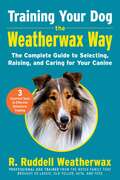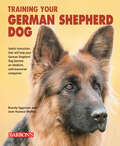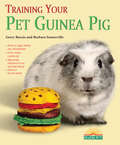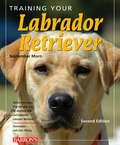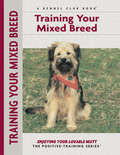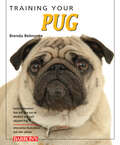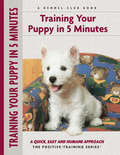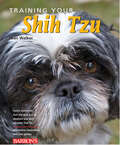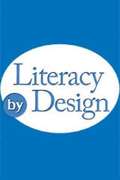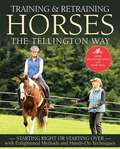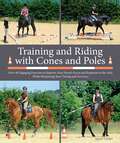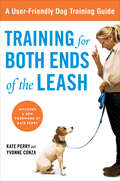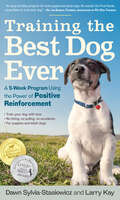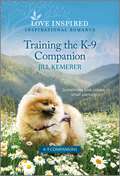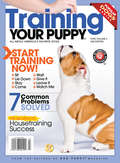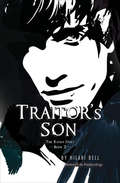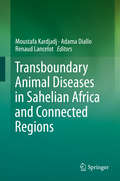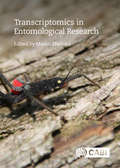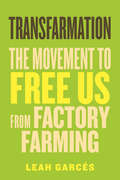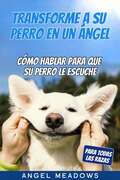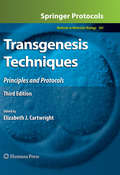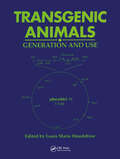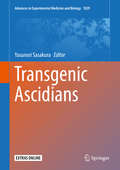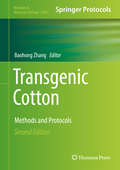- Table View
- List View
Training Your Dog the Weatherwax Way: The Complete Guide to Selecting, Raising, and Caring for Your Canine
by R. Ruddell WeatherwaxA training manual for any dog owner using the tried, true, and trusted Weatherwax methods. The name &“Weatherwax&” is widely known in the dog world. The author is a third-generation professional dog trainer and owner of Weatherwax Dog Training. The family has trained the original &“Lassie&” (actually a male named &“Pal&”), Toto for &“The Wizard of Oz,&” and also &“Old Yeller.&” These theories and tactics are applicable to any dog lover and owner, not just those on the big screen! This is a complete guide to dog ownership and basic training manual using the Weatherwax method, which hasn&’t changed in almost a century; though Robert has added a few enhancements over the years from his exposure to other great trainers. This book will teach readers to: Learn how to raise and train their dog using an approach customized to their dog&’s needs.Understand the correlation between our behavior and our dog&’s behavior.Implement techniques that will allow their dog to interact well in all situations. Find answers to the questions that plague the common dog owner.Train their dog the right way—from day one—as well as address any inherited behavioral issues.Send the right message to their dog, even when no verbal commands are being given.Alter the negative reaction their dog may have to certain situations.Understand the most appropriate tools for their own dog and dispel some of the rumors that exist regarding dogs in general.
Training Your German Shepherd Dog (Training Your Dog Series)
by Brandy Eggeman Joan Hustace Walker2018 Winner of the Dog Writers Association of America (DWAA) Award for Best Book on Training or Sports!First-time owners and dog lovers will rejoice at this veterinarian-approved dog training book! Training Your German Shepherd Dog provides advice on physical and behavioral characteristics you should look for when choosing a puppy, along with recommended training.Intelligent and quick learners, German shepherds are highly trainable, especially when starting early in life. German shepherds are wonderful companions for owners who can offer gentle, positive leadership and consistent training. As part of the B.E.S. Dog Bible series, Training Your German Shepherd Dog focuses on this unique breed, describing its physical traits, history, and behavior. Best of all, Training Your German Shepherd Dog provides essential training methods for owners! Important topics covered include:What to look for when choosing a puppy Living with a dog and understanding breed-specific traits Everyday care, grooming, and exercise Nutrition, health maintenance, and potential breed-specific health problems Training and play activitiesAll books in this dog training series are spiral bound and contain full-color photos. Informative sidebars are full of breed facts, helpful hints, and quick tips on training. Plus, every book comes with an instructional DVD with a dog training course for new owners!Want to learn about even more dog breeds?The B.E.S. Dog Bible series is a wonderful collection of titles focused on pairing owners with the best breed for their family, and training each breed in accordance with their characteristics. Other books in the series include, Boxers, Great Danes, Pugs, Golden Retrievers, Labrador Retrievers, Australian Shepherds, Pit Bulls, and more!
Training Your Guinea Pig (Training Your Pet Series)
by Gerry Bucsis Barbara SomervilleTraining Your Guinea Pig is for pet owners who seek detailed advice on how to get started in training their guinea pig. Guinea pigs are docile, easy to care for, and are capable of learning tricks. Teaching you first how to earn your guinea's trust and friendship, this relationship will be the building blocks to training tricks, enrichment games, and commands.Additional knowledge and advise in this book consists of the correct cage or DIY housing, toys and enrichment information, guinea language and communication, advise on getting all members of the household acquainted, and keeping a healthy and content guinea pig. The suggests activities within these pages will amuse both pet and owner and quickly become a trusted life-long resource for these unique and smart animals.
Training Your Labrador Retriever (Training Your Dog Series)
by September MornFirst-time puppy owners and dog lovers will rejoice at this veterinarian-approved dog handbook! Training Your Labrador Retriever provides advice on physical and behavioral characteristics to look for when choosing a puppy, along with recommended training.Good-natured and affectionate, Labrador Retrievers make wonderful pet companions. As part of the Training Your Dog series, Training Your Labrador Retriever focuses on this unique breed, describing its physical traits, history, and behavior. Best of all, Training Your Labrador Retriever provides essential training methods for owners! Important topics covered include:What to look for when choosing a puppyLiving with a dog and understanding breed-specific traitsEveryday care, grooming, and exerciseNutrition, health maintenance, and potential breed-specific health problemsPuppy and dog training, tricks, and play activitiesAll books in this dog training series are spiral bound and contain full-color photos. Informative sidebars are full of breed facts, helpful hints, and quick tips on training. Plus, every book comes with an instructional DVD with a dog training course for new owners!Want to learn about even more dog breeds?The Training Your Dog series is a wonderful collection of titles focused on pairing owners with the best breed for their family and training each breed in accordance with their characteristics. Other books in the series include, Boxers, Great Danes, Pugs, Golden Retrievers, Labrador Retrievers, Australian Shepherds, Pit Bulls, and more!
Training Your Mixed Breed
by Miriam Fields-Babineau Evan CohenFrom puppy to senior - and every stage of life in between - Positive-Training Series books offer fanciers savvy advice straight from the experts.
Training Your Pug (Training Your Dog Series)
by Brenda BelmonteIt's well known that each canine breed has its own traits, but when acquiring a new pet dog, many inexperienced owners mistakenly assume that the "one-size-fits-all" approach is adequate for purposes of dog training. This new title in B.E.S. Training Your Dog pet care series focuses on the distinctive traits of the Pug. Dog owners learn humane but effective methods of housebreaking and paper training, obedience training, teaching the dog to respond to verbal commands, walk on a leash, and more. All books in the Training Your Dog series are filled with instructive, step-by-step color photos that demonstrate training methods.
Training Your Puppy In 5 Minutes
by Miriam Fields-Babineau Evan CohenFrom puppy to senior - and every stage of life in between - Positive-Training Series books offer fanciers savvy advice straight from the experts.
Training Your Shih Tzu (Training Your Dog Series)
by Joan Hustace WalkerFirst-time owners and dog lovers will rejoice at this veterinarian-approved dog training book! Training Your Shih Tzu provides advice on physical and behavioral characteristics you should look for when choosing a puppy, along with recommended training.Affectionate and confident, Shih Tzus make wonderful pet companions. As part of the Training Your Dog series, Training Your Shih Tzu focuses on this unique breed, describing its physical traits, history, and behavior. Best of all, Training Your Shih Tzu provides essential training methods for owners! Important topics covered include:What to look for when choosing a puppyLiving with a dog and understanding breed-specific traitsEveryday care, grooming, and exerciseNutrition, health maintenance, and potential breed-specific health problemsTraining and play activitiesAll books in this dog training series are spiral bound and contain full-color photos. Informative sidebars are full of breed facts, helpful hints, and quick tips on training. Plus, every book comes with an instructional DVD with a dog training course for new owners!Want to learn about even more dog breeds?The Training Your Dog series is a wonderful collection of titles focused on pairing owners with the best breed for their family, and training each breed in accordance with their characteristics. Other books in the series include, Boxers, Great Danes, Pugs, Golden Retrievers, Labrador Retrievers, Australian Shepherds, Pit Bulls, and more!
Training a Guide Dog (Rigby Literacy #Level 17)
by Wendy Macdonald Mario BorgIn this book, you will meet three people who are important in training a dog to be a Guide Dog. Meet Paula, a puppy raiser, Peter a guide dog instructor and Jordinia and her guide dog Lljin. Learn how guide dogs are choosen, trained and how they work. From Australia.
Training and Retraining Horses the Tellington Way
by Linda Tellington-JonesWorld-renowned equine expert Linda Tellington-Jones&’ healing equine bodywork and innovative training methods have revolutionized the horse training landscape over the last 50 years. Her unique blend of hands-on TTouch (a collection of circles, lifts, and slides done with the hands over various parts of the horse&’s body), combined with humane groundwork and under-saddle exercises, has helped solve training and behavioral problems for horses of every breed, every discipline, every age, and all levels. Now she is presenting a thoughtful recipe for starting the young horse without stress, helping to establish the very best beginning, in hand and under saddle. Unfortunately, not all horses have the benefit of the right foundation, which can lead to misunderstanding, mistreatment, and unhappiness for both human and horse. With this in mind, Tellington-Jones also curates her own experience working with older horses ready for a second chance at life, providing the necessary tools for filling in training &“holes&” and reconfirming lessons that may have been poorly taught or forgotten. The result is book with all the right ingredients and its heart in the right place: Whether starting right or starting over, Tellington-Jones&’s field-tested, compassionate answers are an excellent way to find connection while ensuring the horse a lifetime of success in the company of humans.
Training and Riding with Cones and Poles
by Sigrid Sch??peTraining your horse to concentrate on a lesson, bend his body from nose to tail, and pay attention to where he places his feet—whatever your discipline or level of expertise, these are necessary foundation skills.Here you will find an incredibly handy guide to introducing and solidifying these concepts, as well as many others, with exercises using two very basic training tools: traffic cones and ground poles. Arranged in an easy-to-view format so you can work through the exercises progressively, or dip in and try ideas à la carte, these pages provide all you need to reinvigorate arena workouts and keep both you and your horse engaged in the training process.In addition, you'll discover that incorporating cones and poles in your daily lessons not only provides visual interest and physical guidelines for your horse as he moves around the ring, it also gives you a means of developing accuracy in your schooling figures and transitions. With these exercises, your horse's movement and response to your aids will certainly improve, but so will your overall riding performance.
Training for Both Ends of the Leash: A Guide to Cooperation Training for You and Your Dog
by Kate Perry Yvonne ConzaNew edition updated for 2022!Develop the tools and understanding you need to be the best trainer for your new puppy or adult dog—it&’s never too early or late to start!Professional dog trainer Kate Perry has seen it all: the secret pee-ers, the delivery-man harassers, the skittish wallflowers, the zippy puppy, the pulling sled dog, the barking door dashers, and the withdrawing senior. If any of these remind you of your dog-or you fear your pup is on their way to developing a behavioral challenge-let Kate help you create a balanced training program that will yield positive results for you and your pooch.Kate&’s layered methodology includes an easy-to-take Canine Drive Survey, the same one she provides to her clients, enabling you to identify your dog&’s particular set of drives, behavioral traits, and needs. Next, she develops a personalized training program for you and your pooch that blends together your lifestyle and household setup and your dog&’s unique &“canine-ality&” to create an atmosphere of mutual trust, respect, and understanding. Kate&’s goal is to turn you into the best trainer for your dog, using simple commands with step-by-step instructions that cover all the essential training categories: housetraining, socialization, leash walking, exercise, and dealing with anxiety. Each chapter contains personal stories and photos pulled from Kate&’s client files including Professor Sophie, Kate&’s well-trained pug, who also offers her own brand of authentic nose-nudging advice and tips and has helped teach over 2000 pups in the group classes. Whether you&’re looking for advice for your current canine companion or welcoming a new puppy into your home, Training for Both Ends of the Leash will help you create a happy and healthy relationship that will last a lifetime.
Training the Best Dog Ever: A 5-Week Program Using the Power of Positive Reinforcement
by Larry Kay Dawn Sylvia-StasiewiczTraining the Best Dog Ever, originally published in hardcover as The Love That Dog Training Program, is a book based on love and kindness. It features a program of positive reinforcement and no-fail techniques that author Dawn Sylvia-Stasiewicz used to train the White House dog, Bo Obama, and each of Senator Ted Kennedy’s dogs, among countless others.Training the Best Dog Ever relies on trust and treats, not choke collars; on bonding, not leash-yanking or reprimanding. The five-week training program takes only 10 to 20 minutes of practice a day and works both for puppies and for adult dogs that need to be trained out of bad habits. Illustrated with step-by-step photographs, the book covers hand-feeding; crate and potty training; and basic cues—sit, stay, come here—as well as more complex goals, such as bite inhibition and water safety. It shows how to avoid or correct typical behavior problems, including jumping, barking, and leash-pulling. Plus: how to make your dog comfortable in the world—a dog that knows how to behave in a vet’s office, is at ease around strangers, and more. In other words, the best dog ever.
Training the K-9 Companion: An Uplifting Inspirational Romance (K-9 Companions #22)
by Jill Kemerer"If you are looking for a good cowboy/rancher romance, look no further than the books of Jill Kemerer." --Amazon reviewerMan&’s best friend…Could be the key to a second chance.When rancher Cade Moulten decides to get a therapy dog for his ailing grandmother, he doesn&’t expect a fluffy Pomeranian—or a pretty veterinarian trainer. But Cade will do anything to prove he&’s a changed man, even train the small K-9 alongside Mackenzie Howard. Soon the weekly sessions with Mackenzie have Cade wishing for more. But will he risk revealing his shameful past for a chance at acceptance?From Love Inspired: Uplifting stories of faith, forgiveness and hope.K-9 CompanionsBook 1: Their Unbreakable Bond by Deb KastnerBook 2: Finding Her Way Back by Lisa CarterBook 3: The Veteran's Vow by Jill LynnBook 4: Her Easter Prayer by Lee Tobin McClainBook 5: Earning Her Trust by Brenda MintonBook 6: Guarding His Secret by Jill KemererBook 7: An Unlikely Alliance by Toni ShilohBook 9: A Reason to Stay by Deb KastnerBook 10: The Veteran's Holiday Home by Lee Tobin McClainBook 11: An Alaskan Christmas Promise by Belle CalhouneBook 12: A Steadfast Companion by Myra JohnsonBook 14: A Friend to Trust by Lee Tobin McClainBook 15: Her Alaskan Companion by Heidi McCahanBook 16: A Companion for Christmas by Lee Tobin McClainBook 17: Her Christmas Healing by Mindy ObenhausBook 18: Finding Their Way Back by Jenna MindelBook 19: Their Inseparable Bond by Jill WeatherholtBook 20: Bonding with the Babies by Deb KastnerBook 21: Her Son's Faithful Companion by Jill WeatherholtBook 22: Training the K-9 Companion by Jill KemererBook 23: A Companion for His Son by Lee Tobin McClainBook 24: Her Loyal Companion by Heidi MainBook 25: A K-9 Christmas Reunion by Lisa CarterBook 26: His Christmas Salvation by Lee Tobin McClainBook 27: Guarding Her Christmas Secret by Jill Weatherholt
Training your Puppy
by Bowtie Inc.Your new little puppy is like a sponge during his first few weeks in your home, waiting to soak up all that you can teach him. Take advantage of his willingness to learn! Train your pup properly and you will have a well-behaved adult dog. <P><P>This Popular Pet Library® Magabook® (magazine-book) includes tips, training and advice from professional trainers and dog experts that will help owners train their furry new family member. Part of the Popular Dogs® Series. From the Editors of Dog Fancy® magazine.
Traitor's Son: The Raven Duet Book #2 (The Raven Duet #No. 2)
by Hilari BellIn Trickster's Girl, when Kesla's journey comes to an end, she passes the pouch and the quest on to someone else. She picks Jason, a native boy she thinks will be able to finish the job. But in fact, a family feud has cut Jason off from his traditional roots, and he is even more doubtful and resistant than Kesla was. But Raven, now a beautiful girl, is quite persuasive and manages to convince Jason this is something not only that he can do, but that he must if he wants to heal his family and the earth.
Transboundary Animal Diseases in Sahelian Africa and Connected Regions
by Renaud Lancelot Moustafa Kardjadj Adama DialloThis book primarily focuses on the African Sahel region, shedding new light on the epidemiology, socio-economics, clinical manifestations and control approaches of transboundary animal diseases (TADs) in this specific region. In addition to the description of TADs in Sahelian Africa and connected regions, several issues regarding the burden of TADs, the role of national/regional/international veterinary organizations in the surveillance process, animal mobility, one health and TADs in the dromedary are discussed. The book contains 22 chapters and is structured in three parts, i- general features and commonalities, ii- viral diseases, iii- bacterial diseases. Each chapter was written by a group of experts specialized in the topic. This work will be of general interest to researchers, veterinarians, veterinary public health officers, and students engaged in the surveillance and control of animal infectious diseases, included those of zoonotic nature and that are prevalent in the Sahel.
Transcriptomics in Entomological Research
by Patrick Von Aderkas May R Berenbaum Bernarda Calla Joanna C. Chiu Jürgen Ehlting Melanie Gee Aman Gill Martin Hasselmann Matthew Huff Brian R Johnson Juan Luis Jurat-Fuentes William E Klingeman Kyle M. Lewald Shanlin Liu Antonino Malacrinò Guanliang Meng Yoonseong Park Amber Rose Paulson Steven J Perlman Ratnasri Pothula Sampurna Sattar Margaret E Staton James P Tauber Gary A Thompson Will Kipling Chengran ZhouBridging the gap between genome and phenotype, the transcriptome is a molecular-level snapshot of the act of living. Transcriptomics shows which genes are expressed into proteins in a specific tissue of a specific organism at a specific time and condition. This book gives an account of the extraordinary diversity of ways transcriptomics has been and can be utilised in basic and applied entomological research. It encompasses a vast range of disciplines within entomology, applying transcriptomics to the study of over one million described species of insects. It covers a vast range of disciplines from phylogenomics to pest management, from ecology to physiology, and from behavior to evolutionary biology. The book covers the breadth and depth of transcriptomics use in research to showcase the utility of this technology in all disciplines. Research examples in the book are relevant to fish, birds, plants, and fungi, as well as insects and other arthropods, helping scientists in any field, using any system, to understand what transcriptomics can do for them. The book: Introduces transcriptomics theory and practice for researchers of all levels wishing to gain an insight into how to apply these techniques to their own fields. Showcases the myriad ways transcriptomics can be used to answer biological questions. Is written by a team of international experts describing their own experiences, giving guidance for applying it to the reader's own work. Reviews how transcriptomics research has helped entomologists push their fields further and make new discoveries.
Transfarmation: The Movement to Free Us from Factory Farming
by Leah GarcésThe story of factory farmers, rescued farm animals, and rural communities standing up to big corporations and constructing their own new world that will change the way we eatIn Transfarmation, president and CEO of Mercy For Animals Leah Garcés explains how food and farming policies have failed over decades and offers insights into the wave of change coming from a new crop of farmers and communities who are constructing a humane and sustainable farming system. Factory animal farming faces an abundance of issues—from environmental concerns and animal cruelty, to exploited farmers and poor working conditions—and more and more farmers are searching for a way out and for a new start.Using insights from interviews and fieldwork, Garcés shares the perspectives of three groups:—Farmers—such as the Halley farm, where a family crushed by chicken factory farming builds a new way by transitioning their farm to growing hemp and rescuing dogs.—Animals—like Norma, an industrial dairy cow who was sentenced to death after injuring a worker in an effort to protect her calf.—Farm communities—including stories like how the hog industry in North Carolina preys on historically Black communities by contaminating the air and water for decades with hog pollution.Garcés demonstrates the reasons why we must end factory farming and calls on readers to imagine a future world where Transfarmation is complete and we have transitioned to a just food and farming system.
Transforme a su perro en un ángel: Cómo hablar para que su perro le escuche. Para todas las razas
by Angel Meadows¡DESCUBRA CÓMO PUEDE TRANSFORMAR A SU PERRO EN UN ÁNGEL HOY MISMO! Muchas personas traen a casa un perro recién salido del refugio o del criador pensando que es una bendición. Piensan que tienen un pequeño paquete de alegría que parece un osito de peluche. Pero la vida rara vez se queda en una fase de felicidad sin obstáculos. Aunque ame a su cachorro más que a nada, se encuentra con problemas, se frustra, se agobia y empieza a cuestionarse si tomó la mejor decisión al traerlo. Todos los días hay personas que luchan por no saber qué hacer con sus perros. Esto puede deberse a problemas de comportamiento comunes, como la agresividad o la hiperactividad, puede deberse a la falta de voluntad para cumplir órdenes importantes, o puede ser que el cuidador del perro no sepa por dónde empezar con el adiestramiento. No es de extrañar que tanta gente esté perdida,. Durante décadas, se han difundido información errónea y teorías falsas sobre el adiestramiento de perros. Algunos de estos métodos de adiestramiento son tan perjudiciales que han provocado tendencias agresivas en los perros. Esto no es culpa de nadie, ya que los dueños del perro sólo seguían consejos malintencionados con la esperanza de ayudar a su perro. Pero tampoco es culpa del perro, ya que está asustado y es vulnerable, y siente que no tiene otra opción que actuar para protegerse. Afortunadamente, se puede evitar este triste desenlace al que han llegado muchas personas. Gracias a los investigadores que han dedicado su carrera a los perros, ahora entendemos qué métodos de adiestramiento causan daño y cuáles tienen éxito para ayudar tanto a los humanos como a los caninos. Ahora sabemos que las manadas de lobos son grupos viciosos que se pelean constantemente y atacan ante cualquier signo de debilidad. Los lobos son familias que se cuidan y se ayudan mutuamente. De la misma manera, usted y su perro pueden ayudarse mutuamente en su día a día, estrechando con
Transgenesis Techniques
by Elizabeth J. CartwrightOne of the major challenges currently facing the scientific community is to understand the function of the multitude of protein-coding genes that were revealed when the human genome was fully sequenced. In Transgenesis Techniques: Principles and Protocols, Third Edition, experts in the field fully update and expand upon the previous edition in order to detail the transgenic techniques currently used to modify the genome. The volume explores classic procedures to genetically modify mice and other model organisms, as well as cutting-edge practices involving microinjection, site-specific recombination systems, cryopreservation, and many other topics. Written in the highly successful Methods in Molecular BiologyTM series format, the chapters include brief introductions to their subjects, lists of the necessary materials and reagents, step-by-step, readily reproducible laboratory protocols, and notes sections, highlighting tips on troubleshooting and avoiding known pitfalls. Comprehensive and state-of-the-art, Transgenesis Techniques: Principles and Protocols, Third Edition is a comprehensive practical guide to the generation of transgenic animals and an invaluable source of information in any lab currently involved in transgenic techniques.
Transgenic Animals
by Louis-Marie HoudebineDuring the past 20 years, transgenesis has become a popular technique and a crucial tool for molecular geneticists and biologists. Transgene expression is now better-controlled and even specifically inducible by exogenous factors. While these techniques have quite significantly transformed the experimental approaches taken by biologists, the applications are more limited than expected and concerns have arisen regarding biosafety as well as physiological, social, and philosophical issues. Transgenic Animals: Generation and Use contains articles on the techniques used to generate transgenic animals and a section on the preparation of vectors for the optimally controlled expression of transgenes. It also examines the use of transgenic animals in the study of gene function and human diseases, the preparation of recombinant proteins and organs for pharmaceutical and medical use, and the improvement of genetic characteristics of farm animals. Finally, it discusses more recent problems generated by transgenic animals including conservation of transgenic lines, specific database patenting, biosafety, and bioethics.Drawn from both academia and industry, the contributors to this monograph present in one concise volume all the relevant information on the different aspects of transgenesis. This book can be used as both a reference book and a textbook for specialized university courses and will be of interest to everyone involved in basic research in animal biology, molecular genetics, animal biotechnology, pharmaceutical science, and medicine.
Transgenic Ascidians (Advances In Experimental Medicine And Biology #1029)
by Yasunori SasakuraThis book comprehensively describes the transgenesis techniques and applied experimental methods in ascidians including enthusiastically developed original devices in addition to concrete examples of developmental biology studies. Ascidians have been one of the most important model animals in developmental biology for studying molecular and cellular processes underlying formation of the chordate body plan. Transgenic techniques such as microinjection, electropolation, cis-element analysis and application, and TALENs and CRISPR/Cas9 have been developed in ascidians for more than 20 years, and now many applied methods, some of which are unique in ascidians, have been accumulated. Those extensive technological innovations, such as cell isolation, cell labeling, germ-line transformation, marker transgenic lines, and the experimental systems for studying notochord formation and nervous system, are exceptional particularly in marine invertebrates. This book is useful for ascidian researchers to quickly access the techniques in which they are interested as well as to compare each technology to become familiar with specialized tips, and for biologists of other organisms to learn the unique techniques and ingenious attempts specific to ascidians. Providing detailed and easily understandable descriptions of techniques, the book will inspire ascidian specialists to improve their techniques, encourage anyone wanting to begin studying ascidians, and enable readers to immediately apply the techniques to the organisms they research.
Transgenic Cotton: Methods And Protocols (Methods in Molecular Biology #958)
by Baohong ZhangThis second edition provides a comprehensive collection of the cutting-edge methods for creating and monitoring transgenic cotton and its application on agricultural and basic research. Chapters detail current status and perspectives of transgenic cotton, principle and methods for making transgenic cotton, creating gene knockout lines, foreign gene copy and expression in transgenic plants, improvements to cotton using transgenic technology, and monitoring the potential impact of transgenic cotton on environment. Written in the highly successful Methods in Molecular Biology series format, chapters include introductions to their respective topics, lists of the necessary materials and reagents, step-by-step, readily reproducible laboratory protocols, and tips on troubleshooting and avoiding known pitfallsAuthoritative and cutting-edge, Transgenic Cotton: Methods and Protocols 2nd aims to be a resource for scientists as well as graduate students who work on transgenic plants, plant genetics, molecular biology, and agricultural sciences.
